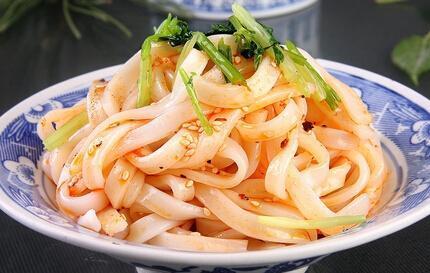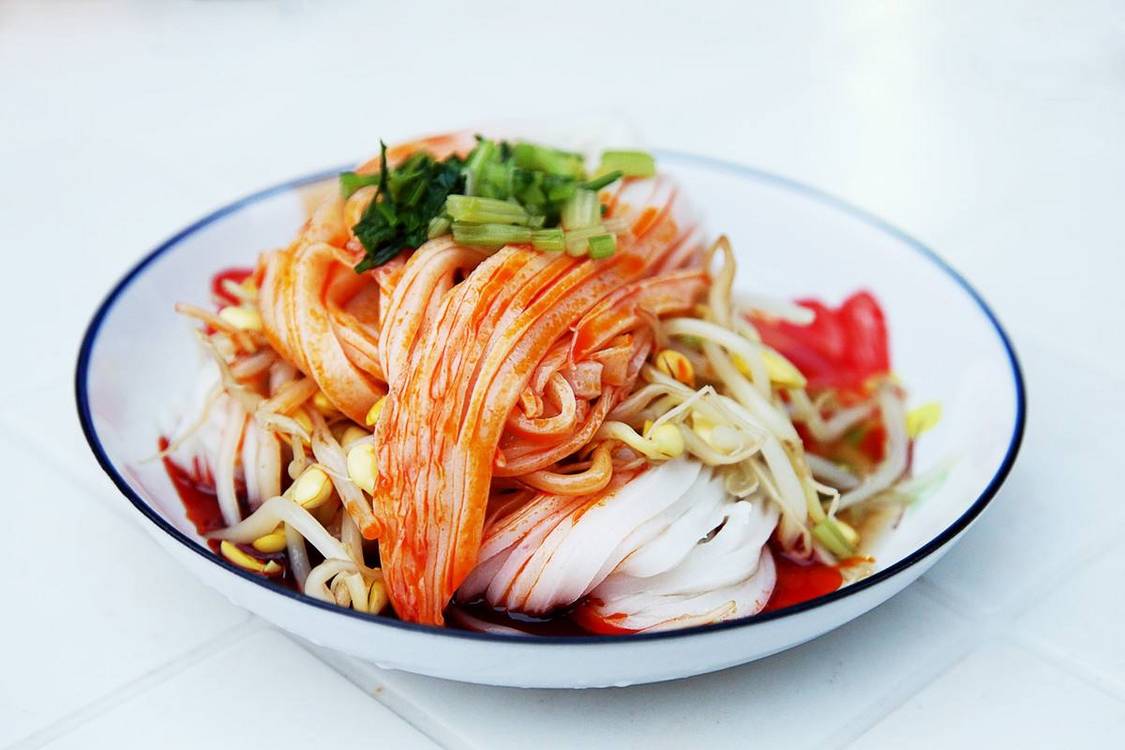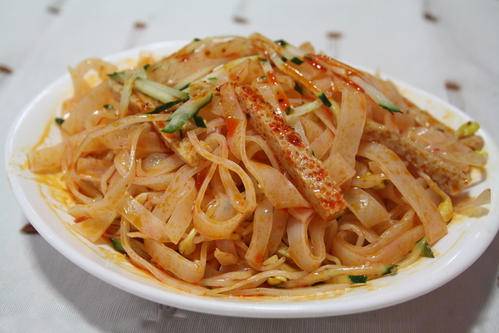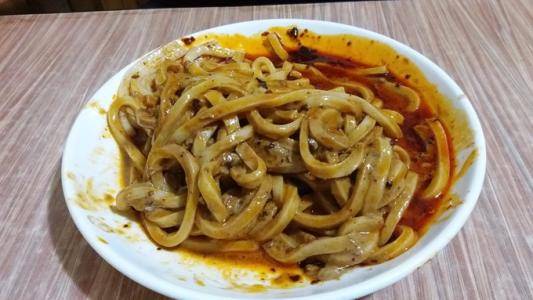Qin Town Rice Noodles
There are many names for cold noodles in Shaanxi, but most refer to Qin Town Rice Noodles if you don't delve into the details. There is a popular saying: 'Qianzhou Guokui Qishan Noodles, Qin Town Soft Noodles around Chang'an.' In Shaanxi dialect, 'soft' means soft and chewy, so Qin Town Rice Noodles are also called 'soft noodles' locally. Qin Town Rice Noodles are not only delicious but also visually appealing. The master who cuts the cold noodles wields a mighty large knife, and with a few 'clang, clang, clang' sounds, the noodles are cut into chopstick-thick strips, captivating countless tourists.
Bamugou Hand-Pulled Noodle Shop
The main dish is hand-pulled noodles. Among the 'Four Great Dan Roles,' hand-pulled noodles have the most distinctive character. In terms of production process, it involves additional steps of fermentation and rolling. The dough prepared the previous day is repeatedly washed with cold water to remove gluten, leaving behind thick noodle water that needs to be left to ferment. The fermented noodle water must be constantly stirred, and once it thickens into a sticky consistency, it is rolled into evenly thick sheets and steamed for a few minutes.
Baoji Rolled Noodles
The main ingredient is rolled noodles. Among the 'Four Great Dan Roles,' rolled noodles have the most distinctive character. In terms of production process, it involves additional steps of fermentation and rolling. The dough prepared the previous day is repeatedly washed with cold water to remove gluten, leaving behind thick noodle water that needs to be left to ferment. The fermented noodle water must be constantly stirred, and once it becomes thick and sticky, it is rolled into evenly thick sheets and steamed for a few minutes.
Sheng Zhiwang Sesame Sauce Liangpi Shop
The biggest difference between Liangpi and other types of cold noodles is that it does not involve washing the dough. It is said that this method was invented by the locals to show their appreciation for food, as they believed that the repeated washing of dough by the Han people when making Liangpi was too wasteful. Instead, they created a method where flour is directly diluted with water and then steamed. The unwashed Liangpi comes out with a slightly darker color and is not as chewy as Qin Town rice noodles. Its advantage lies in the combination of sesame sauce and chili oil, with the rich sauce coating every strand of Liangpi, making every bite flavorful from start to finish.
Wei's Cold Noodles
The noodles are slightly thicker than Qin Town rice noodles, usually cut into two-finger widths and layered in a bowl, soft like gauze. When soaked in hot broth, it's difficult to slurp them like the cold Qin Town rice noodles, but they are soft and dense when chewed. Mixed with fragrant and long-lasting spicy oil, you can't help but swallow three bowls in one go to feel satisfied.













